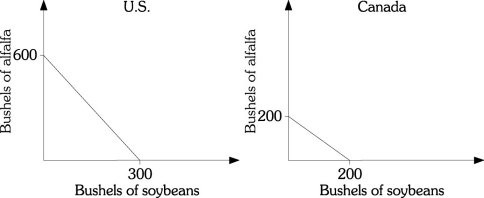Refer to the information provided in Figure 20.1 below to answer the question(s) that follow. Figure 20.1Refer to Figure 20.1. The opportunity cost of producing a bushel of alfalfa in Canada is
Figure 20.1Refer to Figure 20.1. The opportunity cost of producing a bushel of alfalfa in Canada is
A. half as much as that in the United States.
B. four times as much as that in the United States.
C. the same as that in the United States.
D. twice as much as that in the United States.
Answer: D
You might also like to view...
In the market for books, initially there are no taxes on books. Books are normal goods. The government introduces a tax of $4 a book and, at the same time, people's income fall by $4,000 a year
Following these two changes, the equilibrium quantity of books A) decreases. B) increases. C) remains unchanged. D) either increases or decreases. We cannot say which.
Which of the following is not a characteristic of a perfectly competitive market
a. buyers and sellers are well informed about the market b. standardized product c. many buyers and few sellers d. easy exit out of the industry e. easy entry into the industry
The typical supply curve illustrates that
A) other things equal, the quantity supplied for a good is inversely related to the price of a good. B) other things equal, the supply of the good creates its own demand for the good. C) other things equal, the quantity supplied for a good is positively related to the price of a good. D) price and quantity supplied are unrelated.
Demand deposits multiplied by the required reserve ratio equal the amount of reserves
A. the Federal Reserve is required to hold. B. business firms are required to hold. C. a bank is required to hold. D. foreign investors are required to hold.